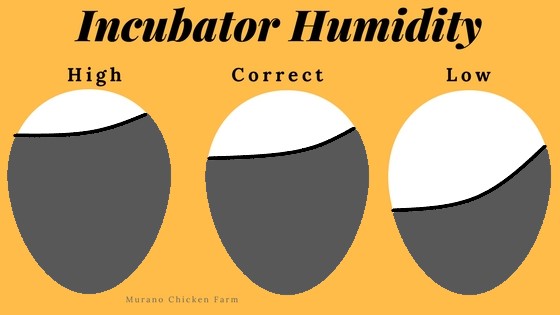Two critical sensors to calibrate on incubators and hatchers are the temperature and humidity probes. Some machines have separate probes and some have combined units. The process for calibration is the same.
Temperature
You will need a glass thermometer to calibrate the temperature inside your incubator. Glass thermometers are very accurate. You will need to place the bulb of the glass thermometer as close to the sensors/probes as possible. It may require you to drill a hole in the incubator to put the thermometer through. Do not put the thermometer in the incubator or hatcher since you dont want to be opening the incubator to take readings.
The thermometer temperature will fluctuate with peaks as the heaters come on and off to maintain setpoint. Its a good idea to place a blob of putty or prestik overt the bulb to average the peaks and troughs . The egg temperature does not match the air temperature at any given moment, but rather the average of the high and low points.
Once the thermometer is place, run the incubator for at least 24 hours before making adjustments to the calibration value on the Incubator computer.
For the ZL-7802A below are the steps to adjust the temperature calibration value for U15
1. Press 'P' for 3 seconds' Beeps.
2. You are in programming mode.
3. Navigate with up/down arrows to U15.
4. Press 'S' and the setting will be displayed.
5. Adjust the value using the up/down arrows
Humidity
TBC
Egg weight loss
Good hatchability is dependent on meeting all crucial incubation parameters. One of these important parameters is weight loss. Eggs should lose 11-13 per cent of initial weight during the first 18 days of incubation. If you having problems with hatchability then follow these tips below.
- Aim for 12 per cent total weight loss from initial egg weight during the first 18 days (between 0.6-0.7% per day) for optimum chick quality.
- Use either a fixed relative humidity set point of 50 – 55% or alternatively allow a gradual decline from 60% to no less than 45%, to allow sufficient evaporation of water from the eggs.
How to calculate egg weight loss :
- take few eggs per batch (10 per 360 eggs)
- before loading into trays, weigh each egg and write the weight on the egg with a koki or pencil
- at the end of day 18 and before transfer to hatcher, collect the eggs that were weighed and select the fertile ones.
- weigh the fertile eggs again and subtract weight from original weight. (Day 1 weight =50g, Day 18 weight = 45g, Difference is (50-45) 5g, 5/50=10% weight loss.
- work out the average weight loss over the fertile eggs.
- if the weight loss is not within the range 11-13 percent, increase (if weight loss is higher than 13%) or reduce (if eight loss is less than 11%) incubator humidity by 1-2 % for next batch until weight loss is within the optimal range.
- do the egg weight loss computations for every batch to ensure your incubators are performing well.
For more information on egg weight loss and how to implement.

